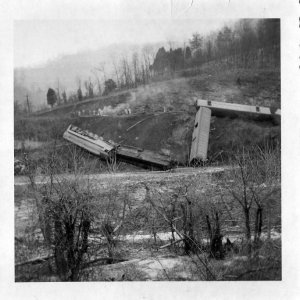...What I have often wondered is why people clean their rails going with the grain. Wouldn't it be better to lightly scuff across the rails with some very fine scotchbright? You would think it would give a lot more traction that way. Especially if the wheels were scuffed the same way, which would be kind of difficult to do.
I use either alcohol or 600 grit black paper. When I use the paper, I always scrub at a 45 deg angle, but I don't scrub much. I want to avoid leaving micro-grooves to the extent I can and still use the grit paper to clean off any oxidation or gunk. The wisdom is that the grooves become repositories, stubborn ones, where the black gunk wants to set in again over time, except now in less time because it has provided the arcing surface that generates the black gunk.
I have read so many posts about wiping the rails down with Rail Zip, Wahl's Clipper Oil (which someone very recently opined was just Dextron III Mercon auto transmission fluid, which I HAVE used to wipe the rails...), about the gleam method, and Bright Boys.
I believe the gleam method, if done properly and fully, should do really well. I don't understand why coating the surface of the rails with an oil should work, but hundreds swear by it. I did wipe the rails on my last layout quite heavily with the transmission fluid before I decommissioned it to see what, if any, effect it would have on traction, pickup, release of black gunk, or prevention of more black gunk. I didn't let it go for weeks, but there was no apparent change in tractive effort, and I experienced no sudden changes in electrical continuity from rails to the decoders. So, whaddoIknow? I tried it and didn't find the drivers slipping as I was sure they would do. I must have placed close to a full tsp on the rails, wiping a finger dipped in it in about eight or nine places around my main. I had 3.4% grades, too.
One last entry into the, "Let's try this..." list, and that is lacquer thinner. Some very credible modellers I know swear that it cleans the tracks better than anything, and CAN be applied with a cleaner car towed or shoved around the rails.


